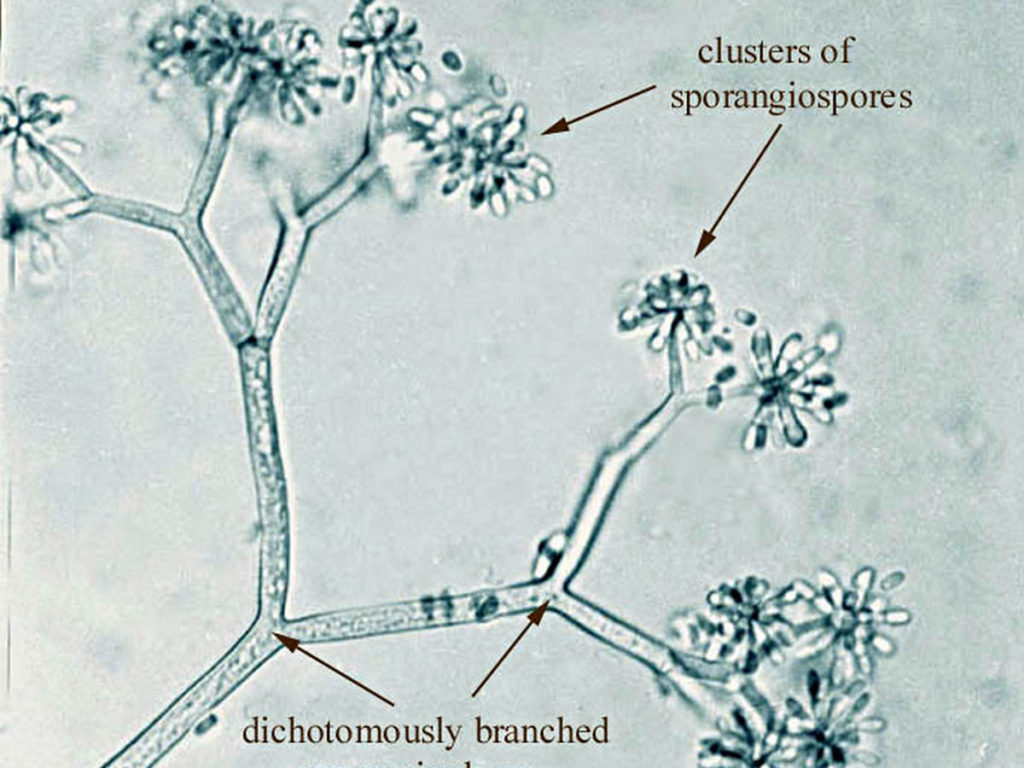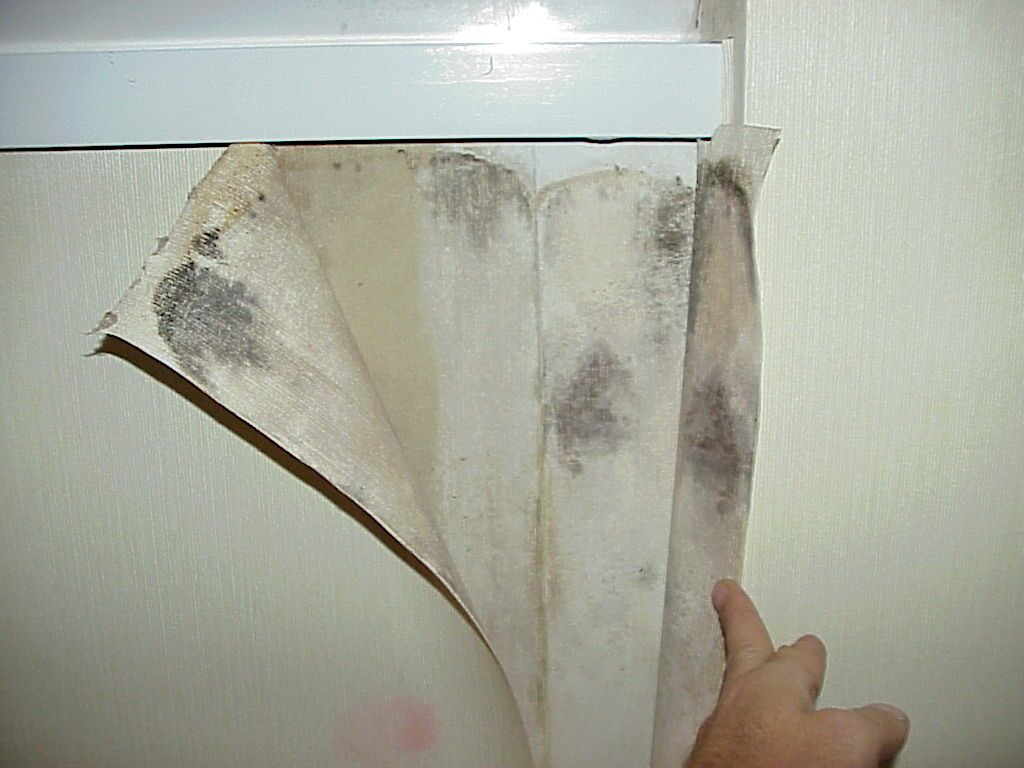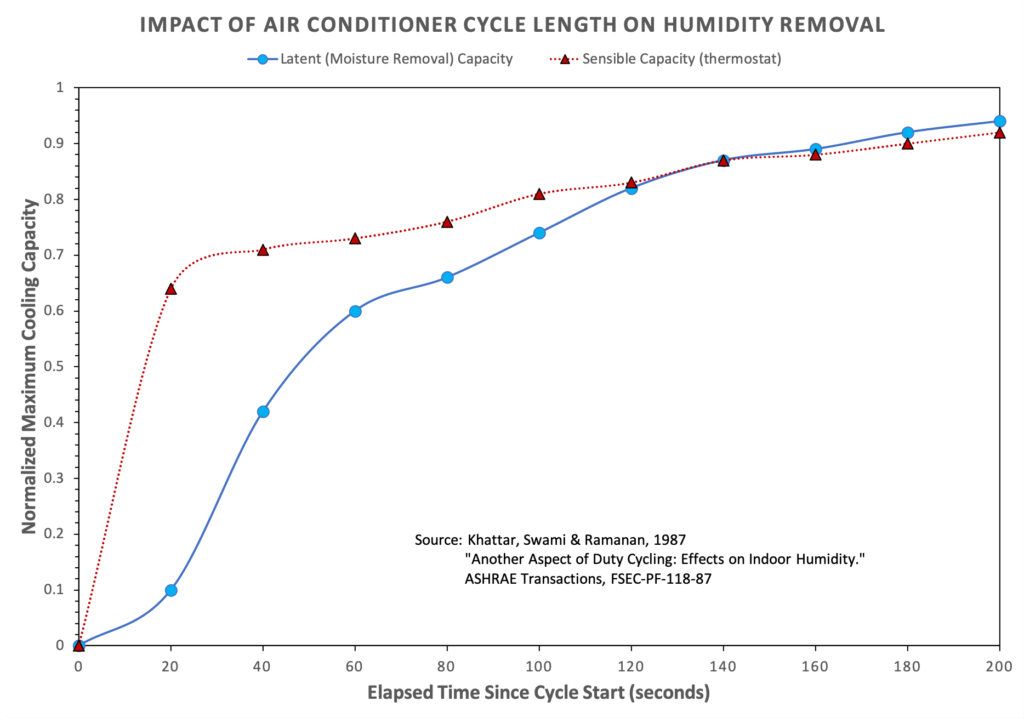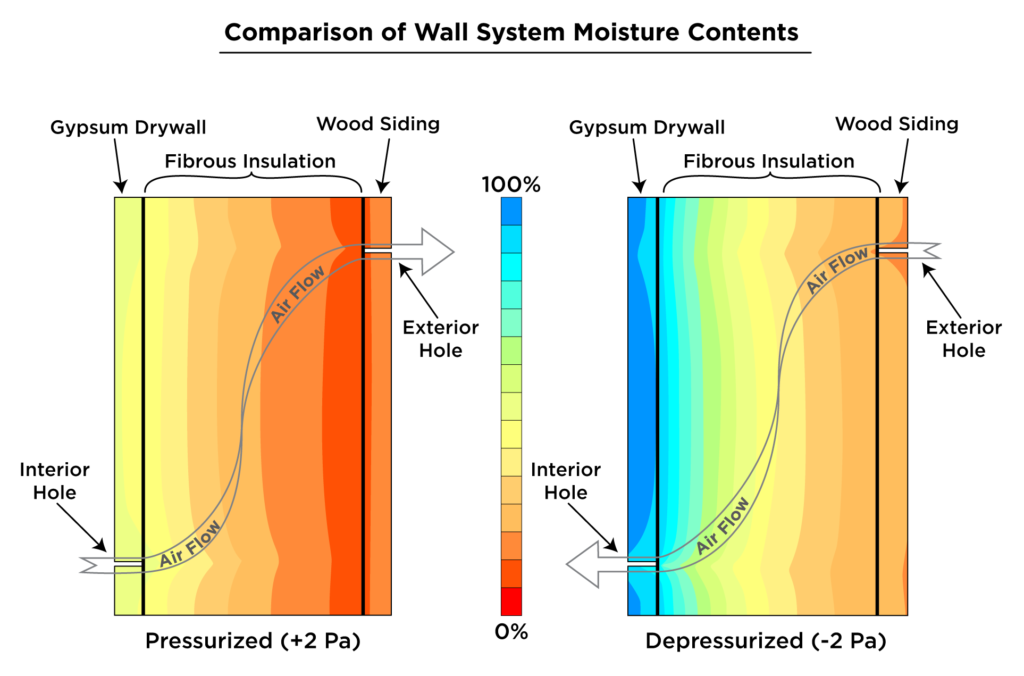How To Prevent Condensation On Air Conditioner Registers
 |
| Multnomah Falls, Columbia River Gorge. This surface area is always wet from the mist of the falls and is a perfect environment for mold — nature's recycler. |
|---|
What is Mold?
Molds (and mildew) are fungi. Fungi are neither plant nor animal only, since 1969, accept their own kingdom. The fungi kingdom includes such wonderful organisms as the succulent edible mushrooms, the makers of the "miracle drug" penicillin and the yeast that makes our bread rise and our fine wines ferment. Biologically, all fungi have defined cell walls, lack chlorophyll and reproduce by means of spores. Approximately 100,000 species of fungi have been described and it is estimated that there are at to the lowest degree that many waiting to exist discovered. The vast bulk of fungi feed on dead or decomposable organic affair – they are i of the principle agents responsible for the natural recycling of dead plant and animal life.
The near common fungi are ubiquitous within our environment and we are constantly exposed to them. For the most office, all the same, diseases acquired by these mutual fungi are relatively uncommon and are rarely found in individuals with normally functioning immune systems.(ane) Nonetheless, mold has recently experienced loftier profile press coverage. There are a diverseness of inflammatory press reports concerning lawsuits over air quality in homes, courthouses and other buildings; parental concerns regarding schoolhouse classroom environments; home insurers refusing to embrace mold damage; and widely distributed news reports on then-chosen "toxic mold." Only don't panic. Mold can exist managed effectively in most cases and this guide will help you do that.
Mold Growth Requirements
There are iv disquisitional requirements for mold growth:
- available mold spores
- available mold food
- advisable temperatures
- considerable moisture.
The removal of whatsoever one of these items will prohibit mold growth. Let'due south examine each requirement, one-by-ane.
 |
| Magnified sporangiophore of the Pilobolus — "the shotgun fungus." The pocket-sized nighttime knobs at the elevation of each stem incorporate the spore sacks that are "shot" up to vi feet into the air toward the sunlight by this unique fungus. paradigm Copyright George Barron |
|---|
Mold Spores
Ranging in size from 3 to 40 microns (human hair is 100-150 microns), mold spores are ubiquitous – they are literally everywhere. There is no reasonable, reliable and cost-effective means of eliminating them from environments that humans inhabit. Then, trying to command mold growth through the elimination of mold spores is not feasible.
Mold Nutrient
If all 3 other requirements are met, near any substance that contains carbon atoms (organic substance) will provide sufficient nutrients to support mold growth. Even the oil from your skin that is left when you lot touch an otherwise unsuitable surface, similar stainless steel, or the soap residue left from a good cleaning will provide sufficient nutrients to support the growth of some molds. And many of the nearly common materials found in homes similar wood, paper and organic fibers are amongst the most preferred of mold nutrients. Thus, eliminating mold nutrient from your environment is a virtually incommunicable task.
Appropriate Temperatures
Unfortunately, nearly molds grow very well at the aforementioned temperatures that humans prefer. In addition, anyone who has cleaned out their refrigerator speedily realizes that temperatures close to freezing are not cold enough to forbid mold growth and temperatures that are much warmer than humans adopt, like those of the tropics, will abound abundant quantities of mold. Therefore, it is not viable to control mold growth in our home environment through the control of temperature.
Considerable Wet
Nearly molds requires the presence of considerable moisture for growth. Obviously, the word "considerable" is cardinal here. The mycologists (fungi scientists) refer to "water activity" when describing the required weather condition for mold growth. The various species of mold accept different water activeness requirements. A material'south "water activity" is equivalent to the relative humidity of the air that would be in equilibrium with the material at that material moisture content. The vast bulk of mold species crave "water activity" levels that are equivalent to material equilibrium moisture contents corresponding to relative humidities of at least 70%. In fact, the bang-up majority of serious, large mold outbreaks within buildings occur where porous, cellulose-type materials have literally been kept wet by liquid water or sustained condensation.
Human beings adopt humidities that are below the disquisitional relative humidity for mold growth. Thus, of the four bones requirements for mold growth, moisture availability is by far the easiest mold growth requirement to command in environments that humans like to inhabit. As you will see from the remainder of this guide, and from the vast bulk of the literature on mold control, the consensus regarding effective mold control strategies consists of the combination of reducing the availability of moisture and killing and removing active mold growth colonies.
Determining If Y'all Take Mold
 |
| Spoiled oranges. |
|---|
Common household molds have a characteristic "musty" or "earthy" odour, somewhat like the wood floor deep in the woods. Growing colonies of mold tin can too exist visually observed in many cases. Most people are familiar with moldy bread or mold growth on cheese or other food products that have been kept too long, so the "dark-green fuzzy" characteristic of most mold growth is familiar. And those who accept lived in Florida have heard the expression "greenish shoe syndrome" which refers to the fact that mold is peculiarly fond of leather products left unused for periods of fourth dimension in dark humid places.
 |
| Notation the pink "splotch" at the bottom-eye of this photo. It is the telltale warning sign that there is a likely mold "bloom" behind the vinyl wall roofing. |
|---|
Although well-nigh active mold colonies announced greenish to black (typical of mold growing on bath tile grout) in color, the characteristics of mold colonies growing backside vinyl wall covering in buildings takes on very unlike characteristics. These mold outbreaks typically issue in pinkish to yellowish staining of the wall covering. They are quite important considering they signal serious, detrimental moisture accumulations inside the gypsum wallboard backside the wall covering that can not exist removed by your air conditioning or dehumidification systems. Where these issues appear, they usually require the assistance of a professional equipped with pressure measurement and other diagnostic equipment to make up one's mind the source(s) of the wet causing the trouble.
How to Minimize Mold Growth
The following practices volition assist minimize the growth of molds inside homes located in hot, humid climates similar Florida's. Mold growth on the outside of homes is not covered here and readers are cautioned that these practices may not be applicable in other climates.
- Air Conditioner Operation: Always set the fan mode switch of your air conditioner thermostat in the Motorcar position, never in the ON position. Why? When fix to the ON position the blower fan runs continuously and the wet which has condensed on your air conditioner'southward evaporator gyre during cooling is re-evaporated and diddled dorsum into your home before it can bleed off the coil and out of your home. This causes the relative humidity in your home to exist significantly greater than if the air conditioner thermostat fan mode switch is set to the Motorcar position. Even in the "car" position, some air conditioners run the blower for one-3 minutes afterward the compressor shuts off. To maximize dehumidification, information technology is best to disable this characteristic. A qualified mechanical contractor should be able to disable this characteristic so that the blower and compressor plough off simultaneously.
- Air Conditioner Choice: If you are building a new home and can choose, then choose an air workout system with a variable speed air handler and an operating selection mode for "enhanced wet removal." This is a good selection for multiple reasons: the units are SEER 14+, they are quiet and they do a ameliorate job removing moisture, particularly nether part load conditions. They reach this by starting the air handler fan at a lower speed during each bike, which improves wet removal. The variable speed fan motors are intrinsically more than energy efficient– they employ equally little as 270 W/1000 cfm of air catamenia as compared with the typical 450 Due west/one thousand cfm. Each of the major manufacturers take them. When used properly, they are platonic for Florida's climate.
- Air conditioner sizing: Oversizing of air conditioners is common. The more than an air conditioner is oversized, the poorer its humidity removal performance, especially at college thermostat settings. This is because, during each ac on cycle, the moisture removal does not accomplish full chapters for about the get-go three minutes of functioning. The more the system is oversized, the shorter the on-bike during which moisture is removed. Thus, if a home is properly sized with a 2-ton air conditioner and a 4-ton system is installed, the 2-ton auto would practice a much meliorate job removing wet even though the 4-ton motorcar had twice the nameplate humidity removal adequacy (Btu/hr). Remember, the shorter the air conditioner on-cycle, the less run a risk for effective moisture removal. This fact can be clearly seen in the figure below, which is taken from FSEC test information.(2)

The following tabular array of results from experiments that were conducted by the Florida Solar Free energy Eye illustrate the relative humidity impacts of both thermostat set betoken temperature and the position of the fan mode switch. (2)
Impact of Indoor Set Temperature and Fan Operation
Manner on Interior Relative Humidity*
| Indoor T | Avg RH % | Compressor | Avg RH% |
| eighty | 55% | 0.27 | 65% |
| 77 | 60% | 0.35 | 70% |
| 76 | 67% | 0.60 | 70% |
| 71 | 74% | 0.80 | 75% |
* Air-conditioning operated alternatively for at least one week in each mode.
- Interior Doors: Interior doors should be kept open up when air conditioning unless your heating and cooling system has a fully ducted return air system from each room of the home or unless specific and sufficient return air transfer pathways have been installed to ensure that closed interior doors do not upshot in space depressurization bug in the abode.
- Infinite Pressurization: It is important that homes in hot, humid climates be pressurized slightly with respect to outdoors. The reason is adequately straightforward just not very obvious. If homes are depressurized with respect to the outdoors, then hot, humid outdoor air will exist pulled through the very small air pathways that exist in all edifice envelopes (walls, ceilings, floors, etc.). To become from the outside of the home to the within, this air often must follow circuitous pathways. For example, the air may enter the wall system loftier on the exterior where an outdoor light fixture is mounted and go out the wall system depression on the indoors where an electrical outlet is located. If the habitation is air conditioned, the gypsum wallboard will be relatively common cold — frequently colder than the dewpoint temperature of the humid outdoor air that must flow along that gypsum wallboard to that indoor electrical outlet. In Florida, it is non uncommon for summertime outdoor air dewpoint temperatures to exist greater than 80 F! When this occurs, the colder gypsum wallboard can deed just like that ice tea drinking glass that "sweats" similar crazy when yous take it outdoors — information technology tin can condense the moisture out of the air that is flowing along its back surface on its mode to the electric outlet that is serving as its pathway into the air conditioned home. As illustrated in the figure beneath, this can effect in moisture accumulation within the wallboard, which, in turn, can result in significant mold growth.

The above wall diagrams from detailed reckoner simulations that model the combined impacts of heat, wet and air send (iii) illustrate the importance of this air flow phenomena. The wall on the left bounds a space that is pressurized with respect to the outdoors and the one on the right bounds a space that is depressurized. The ii Pa (Pascal) pressure gradient is very, very modest — in that location are 101,325 Pa in one atmosphere. Clearly, it is the direction of the pressure gradient rather than its magnitude that is critically of import here. Y'all very much desire your home slightly overpressurized in hot, humid climates so that dry, absurd indoor air is pushed out of the abode through the walls (figure on left) rather than have hot, humid outdoor air sucked into the home through the walls (figure on right). Fortunately, information technology is relatively like shooting fish in a barrel to pressurize a dwelling — all that is necessary is that slightly more than air exist brought into the home than is exhausted. This normally requires a positive mechanical ventilation system.
Things that may cause space depressurization in homes:
– Exhaust fans (bathroom, kitchen, cranium, crawlspace, etc.)
– Cloths dryers
– Supply duct leaks
– Bereft return air pathways due to interior door closure
- Ceiling Fans: Apply ceiling fans in the summer — they allow you to be comfortable at college air-conditioning thermostat temperatures. And they will relieve air-conditioning free energy costs if you employ the most efficient ones (see Gossamer Wind® Serial (Windward) — available at Domicile Depot stores) and turn them off when no one is in the room.
- Measure the RH in Your Home: Invest in a digital temperature and relative humidity (RH) sensor (nigh $20) and observe your indoor relative humidities. 2 sources for these sensors are Radio Shack and Therma-Stor Products (1-800-533-7533). During the hot summer months, with the air-conditioning on, the RH should non exceed 55% during the 24-hour interval on a regular basis. If it does, you probably have problems either with leaks in your duct organization or with your air conditioner unit itself – it could exist too large, improperly charged or have insufficient air menstruum across the coil. Consult with a qualified air conditioning expert or mechanical engineer to make up one's mind the problem.The highest relative humidities in your home are probable to occur during mild weather when your air conditioner is not needed during the day. In Florida, the outdoor relative humidity reaches very near 100% on nigh nights, regardless of daytime temperatures. If your home is open up to the outdoors during these periods, the materials in your dwelling house will adsorb moisture from this very humid air, again regardless of the temperature. If this wet is not removed during the post-obit day, the "water activity" of the materials in your habitation can stay at or above 75% for extended periods and mold is likely to grow on these surfaces. If y'all have RH levels exceeding seventy-75% for extended periods, and find it difficult to control mold growth on surfaces in your home in leap, fall and winter, you may need to invest in some type of dehumidification organisation and should consult with a qualified mechanical organisation expert for advice.
-

Note the pink "splotch" at the bottom-heart of this photo. It is the telltale alarm sign that in that location is a likely mold "bloom" behind the vinyl wall roofing. Vinyl Wall Covering: Impermeable interior surfaces similar vinyl wall coverings tin result in astringent mold problems in hot humid climates such as Florida's. Moisture coming from outdoors can accumulate within the gypsum wallboard that is behind the vinyl wall covering. This normally occurs as a result of firm depressurization where outdoor air is being sucked into the home through the very infinitesimal air pathways that exist in all normal wall systems. Where this trouble occurs, outbreaks of mold frequently occur below the wall covering on the surface of the gypsum wallboard. This mold growth is normally characterized past pinkish to yellowish "splotches" on the vinyl wall covering. The wet accumulation also can exist severe enough to crusade the gypsum wallboard to badly deteriorate and go "mushy." If you have noticed these symptoms, a edifice scientific discipline professional should exist consulted. Positive pressurization of your home is one method of minimizing the potential occurrence of this problem.
- Return Air Pathways: It is of import that at that place be sufficient air flow pathways for the supply air that is delivered to each room of a home to return to the air conditioner's air handler unit of measurement (the box with the blower fan). Otherwise, the part of the domicile containing the main return to the air handler unit of measurement will be "starved" for air, resulting in depressurization of this infinite with respect to the outdoors. If this occurs, outdoor air will exist fatigued through the small pathways that exist in the outside edifice envelope. In hot, boiling climates similar Florida's, these air flows tin can result in the aggregating of moisture inside the gypsum wallboard, especially if it has vinyl wall roofing. This, in turn, can upshot in the rapid and abundant growth of molds — remember, the cellulose (paper) on gypsum wallboard makes an excellent, preferred mold nutrient.If room doors are kept open, there will be sufficient render air pathways. Withal, if rooms doors are closed, the rule-of-pollex is that there should be about 50 square inches of "gratuitous" air transfer expanse for each 100 cfm (cubic feet per minute) of supply air to the room. In this case, the term "free" ways a simple, clear hole in the wall between the room and the remainder of the dwelling house. If, for appearance and privacy reasons, this hole is to be covered by grilles on each side of the wall, and then the overall render air pathway expanse needs to be increased past about 40% to business relationship for the air menstruum resistance of the grilles, or nigh 70 foursquare inches per 100 cfm of supply air flow.
- Bathrooms: Well-nigh bathrooms, particularly tile in and around showers and tubs is regularly wet. As a outcome, most bathrooms grow mold and require regular cleaning. A weak solution of h2o and common household bleach can be used to regularly make clean these areas and keep them gratis of mold. Low-noise bathroom fans are also recommended to remove excess wet during periods when information technology is being generated by bathing or showering. (Meet also exhaust fans.)
- Whole-House Ventilation Fans — Opened Windows: Avoid the use of these fans when it is boiling outdoors, especially if yous have noticed mold growth in your home or you are having trouble controlling the relative humidity in your dwelling. In addition, avoid opening windows for long periods when it is humid outside (east.k. during nights and evenings) if yous are experiencing mold growth problems in your home.
- Air Conditioner Maintenance: Change your filters regularly and apply pleated filters. Once a year get your air-conditioners professionally serviced. At that time make sure coils are clean, the condensate drains properly and that the bleed pan has no mold.
- Exterior Water Management: Redirect water abroad from the dwelling house's exterior — redirect sprinklers and so that they don't spray on the walls. Practise not mural with hills that straight water flow towards the habitation. Use gutters. Keep down-spouts free of debris and straight outflow away from the home.
- Small Leaks: Fifty-fifty small h2o leaks will cause mold problems. Rainwater leaks from improperly flashed windows, wall and roof penetrations and plumbing leaks should be promptly repaired. Periodically inspect under sinks and vanities for signs of h2o leakage. Use your nose and smell for "musty" or "earthy" odors – they normally indicate the presence of mold. Fix all water leaks promptly.
- H2o Damage: H2o damage from flooding or other major water intrusion in homes should be stale within 24 hours if at all possible. For severe flooding and astringent water damage for more than 48 hours, a trained restoration professional person should be consulted regarding cleanup procedures. Readers are also encouraged to consult the American Red Cross website at the bottom of this page for further information.
- Moisture Condensation: Single-pane, metal windows, which are common in Florida, mostly condense water on the inside in winter. Information technology is good practice to remove this condensation earlier it can run off and be absorbed by porous materials similar woods casing or gypsum wallboard. Condensation can too occur on other surfaces in homes. If condensation is noticed on interior surfaces in summer, it may point a number of problems, including inability to command indoor humidity; air conditioner supply registers aimed directly at interior surfaces; duct leakage issues and pressure imbalances; or all of the to a higher place. If you notice indoor surface condensation during summer, yous should contact a professional to assistance diagnose the cause. Withal, during early leap when the footing is withal cool, information technology is quite possible to feel some condensation on tile floors on slab-on-form homes that are open up to the outdoors. This should not be a regular occurrence, but only something that occurs rarely.
- Exhaust Fans: Make sure the clothes dryer vent goes all the way to the exterior of the home, not to the crawlspace or to the inside of the attic or the house. The same goes for bath vent fans. Information technology is also important for the kitchen range hood to vent to the exterior as well. Recirculating stove and kitchen vents provide no removal of stovetop moisture and inferior control of cooking related pollutants compared with venting completely to the outdoors. A major deterrent to the utilise of kitchen range hoods is noise. Choose an ultra-tranquility, inline ventilation fan for your range hood. Kitchen and bath exhaust fans should only be used while cooking or using the bathroom to remove backlog moisture generated by these activities.Information technology is best practice to either accept bathroom vent fans interlocked with the light switch then they do not get left on or accept them switched by a transmission timer that will shut them off after a period of time, or control them past humidistat.
- Closets: Fungi like the dark and closets are rarely supplied with conditioned air as a standard function of ac systems. Equally a result it is not all that uncommon to have mold or mildew occur in closets, peculiarly on leather. Leaving the cupboard doors open to provide more conditioned air apportionment or leaving the cupboard lights on with the door closed so every bit to raise the temperature (which lowers the RH) can reduce these problems.
- House Plants: Minimize live house plants, especially if you take any trouble controlling the relative humidity in your dwelling house.
Recommendations to Control Humidity in Vacant Florida Homes
Luckily, FSEC has conducted a report sponsored by Florida Power and Low-cal Company on how to care for vacant Florida homes and then that humidity levels are controlled:
http://world wide web.fsec.ucf.edu/en/publications/html/fsec-cr-1487-04/
Fundamentally, within that written report, two strategies are recommended to control wet:
1) Place a dehumidifier on a timer in the dwelling so that it runs for 3-four hours per day. Often it is best to drain the condensate from the dehumidifier to a sink. Leave the Ac system fix off with this strategy, although ceiling fans on low speed might be ready to circulate the air in rooms. Doors to rooms should be left open.
2) Using a programmable thermostat, fix the air conditioner to 74 F from 3-half dozen AM. This operates the cooling organisation constantly during the early morn hours when indoor curl temperatures volition be achieved resulting in proficient moisture removal. Ready the thermostat to 85 F during the rest of the twenty-four hours. This appears to work well in a majority of homes and nether a wide range of weather condition conditions, although whatever significant duct leakage must be repaired.
Additional Resource
- U.S. EPA – "A Brief Guide to Mold, Moisture and Your Home" https://www.epa.gov/mold/brief-guide-mold-wet-and-your-home
- Building Scientific discipline Corporation – online articles on mold and moisture control: https://buildingscience.com/search/node/mold
- National Association of Abode Builders Research Center – ToolBase Services site: "Mold in Residential Buildings":
https://www.nahma.org/wpcontent/uploads/files/member/NAHMAAnalysis/
NAHB.pdf
- American Red Cross – "Disaster Cleanup & Repair For Your Home" provides first-class advice for cleanup of major water harm in homes: https://www.redcross.org/get-assistance/disaster-relief-and-recovery-services/disaster-cleanup.html
The authors of this webpage are Philip Fairey, Subrato Chandra and Neil Moyer of the Florida Solar Free energy Middle.
_________________
Footnotes:
i. Readers are cautioned that there is not full consensus amid the medical and health science community on the potential wellness consequences of exposure to molds. Individuals with compromised immune systems, allergies, asthma, other lung diseases or other medical problems should consult their physician before physically contacting or agonizing any mold growths.
2. M.Thousand. Khattar, M.V. Swami and Due north. Ramanan, "Another Aspect of Duty Cycling: Effects on Indoor Humidity," FSEC-PF-118-87, ASHRAE, 1987.
3. Swami, G.Southward., Lixing Gu and Philip Fairey, 2001. Appendix M, Moisture Analysis and Condensation Command in Building Envelopes, Heinz R. Trechsel, Ed., pp.183-184, ASTM Stock No. MNL40, ASTM International, West Conshohocken, PA.
How To Prevent Condensation On Air Conditioner Registers,
Source: https://energyresearch.ucf.edu/consumer/buildings/building-science-basics/mold-growth/
Posted by: kiddburs2001.blogspot.com


0 Response to "How To Prevent Condensation On Air Conditioner Registers"
Post a Comment